Soil structure
Amber Anderson
- Identify soil structures and factors influencing their development
- Predict what structure might be present given additional information such as soil conditions or horizon
- Explain how structure may impact plant growth or other soil functions
- Predict how management factors might impact structure
Structure
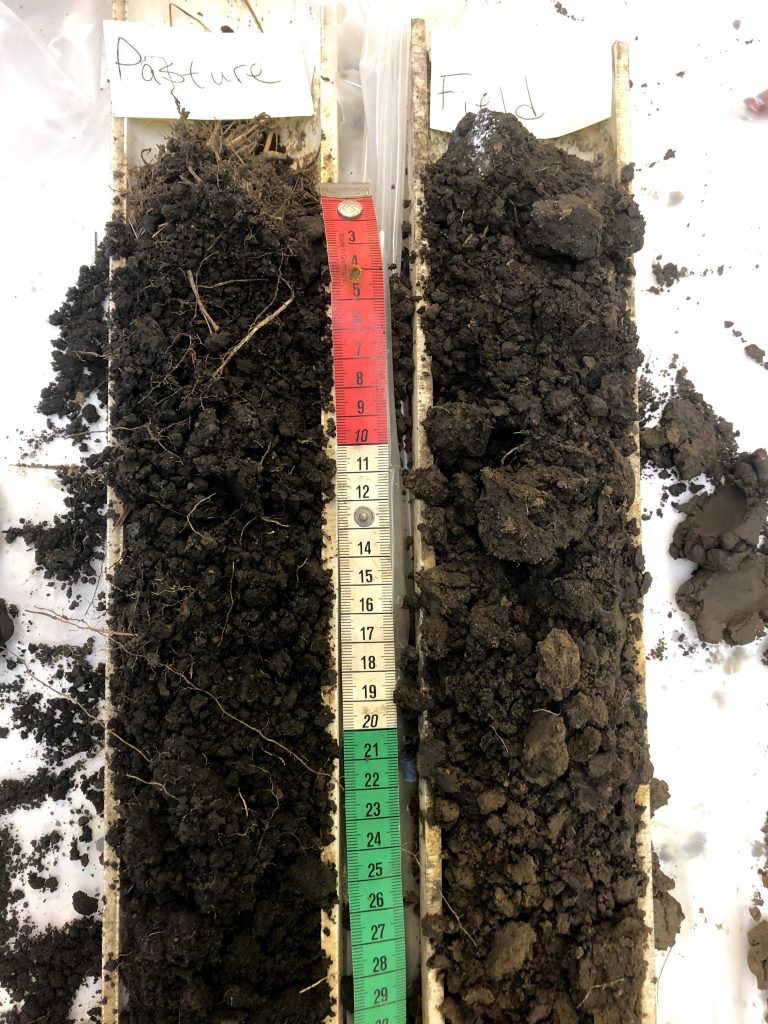
Soil structure is the shape in which soil particles group together and form aggregates. A soil aggregate, or conglomerate of sand, silt, clay, and sometimes organic material, may be a variety of different shapes.
Structure is important because it allows critical areas of open space, vital for water to move, roots to grow, and soil organisms. Consider a classroom or the space in which you are currently viewing this: when the materials are put together effectively, it allows space for interactions. If only a pile of building materials, the space doesn’t serve the same function.
Factors influencing aggregation
A variety of factors influence how soil particles aggregate or group together. Biological activity, organic addition, wetting/drying cycles, freezing/thawing cycles would be expected to increase aggregation, whereas tillage, compaction, and chemical properties such as sodium would decrease aggregation.
Shapes
Granular
These rounded groups of particles don’t pack together well, allowing more space for water to move through. They are most commonly found in A horizons with higher levels of organic matter, healthy root growth, without significant compaction.
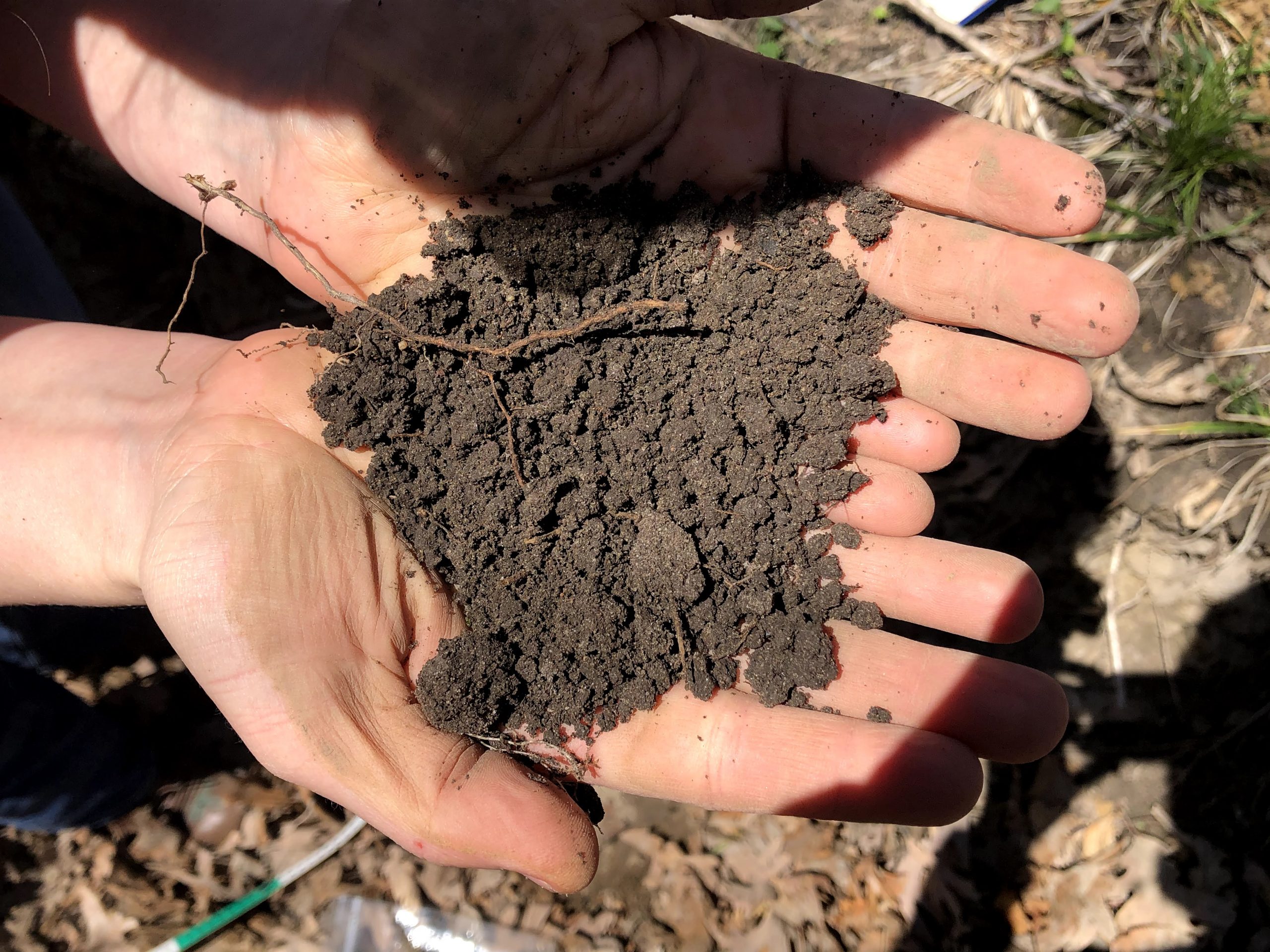
Platy
Commonly found in E horizons, the natural breaks in this soil are horizontal rather than vertical. These are easily destroyed by tillage. Note that this is different from ‘plates’ formed by operating equipment when a soil is wet. Although they look somewhat similar, this structure is naturally formed over time.
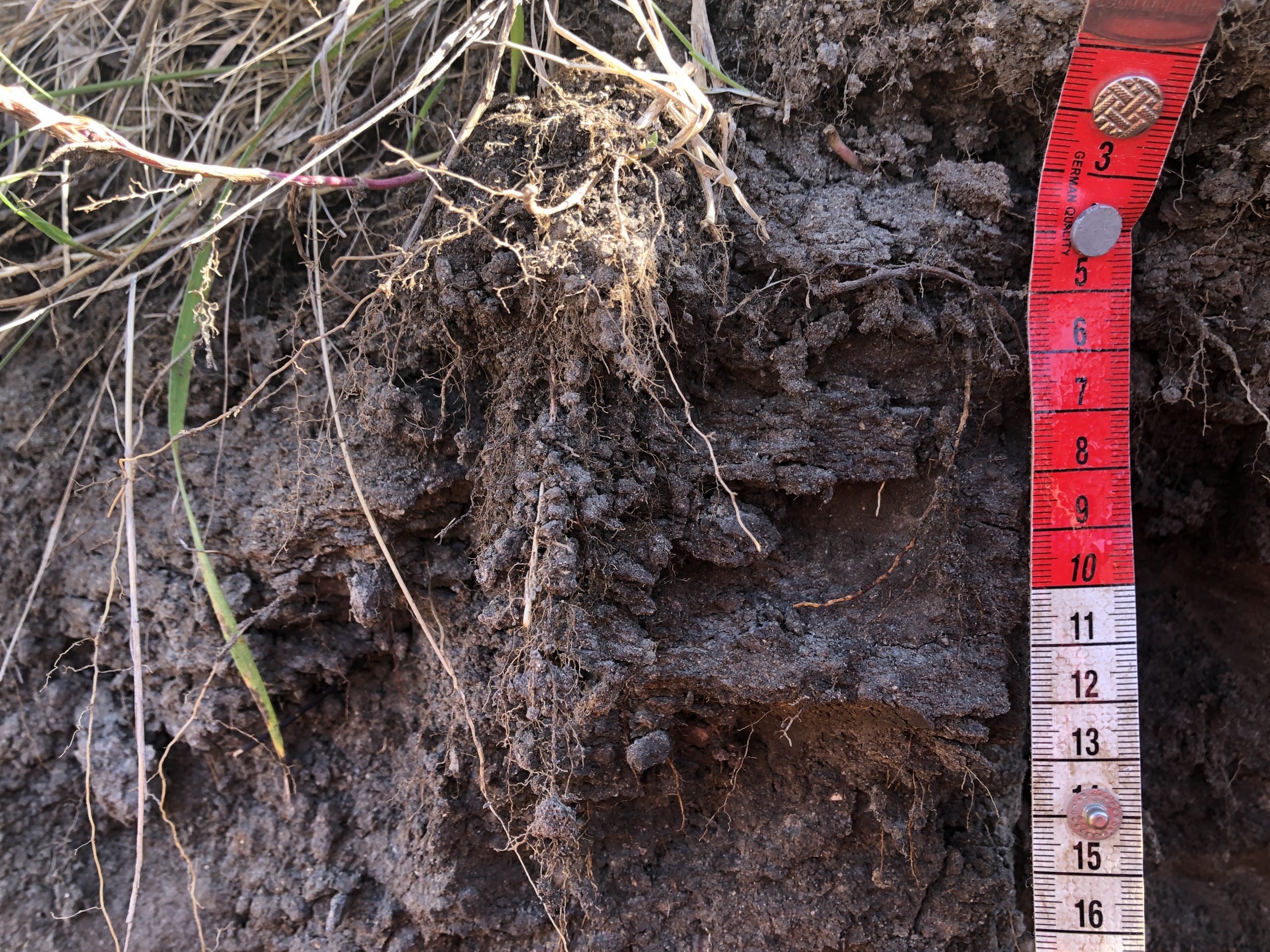
Blocky
Blocky structural units are common to find in a B horizon or cultivated A horizon. They can be grouped by either angular blocky having sharp angles likely found in higher-clay soils, or subangular blocky, the more rounded corners.
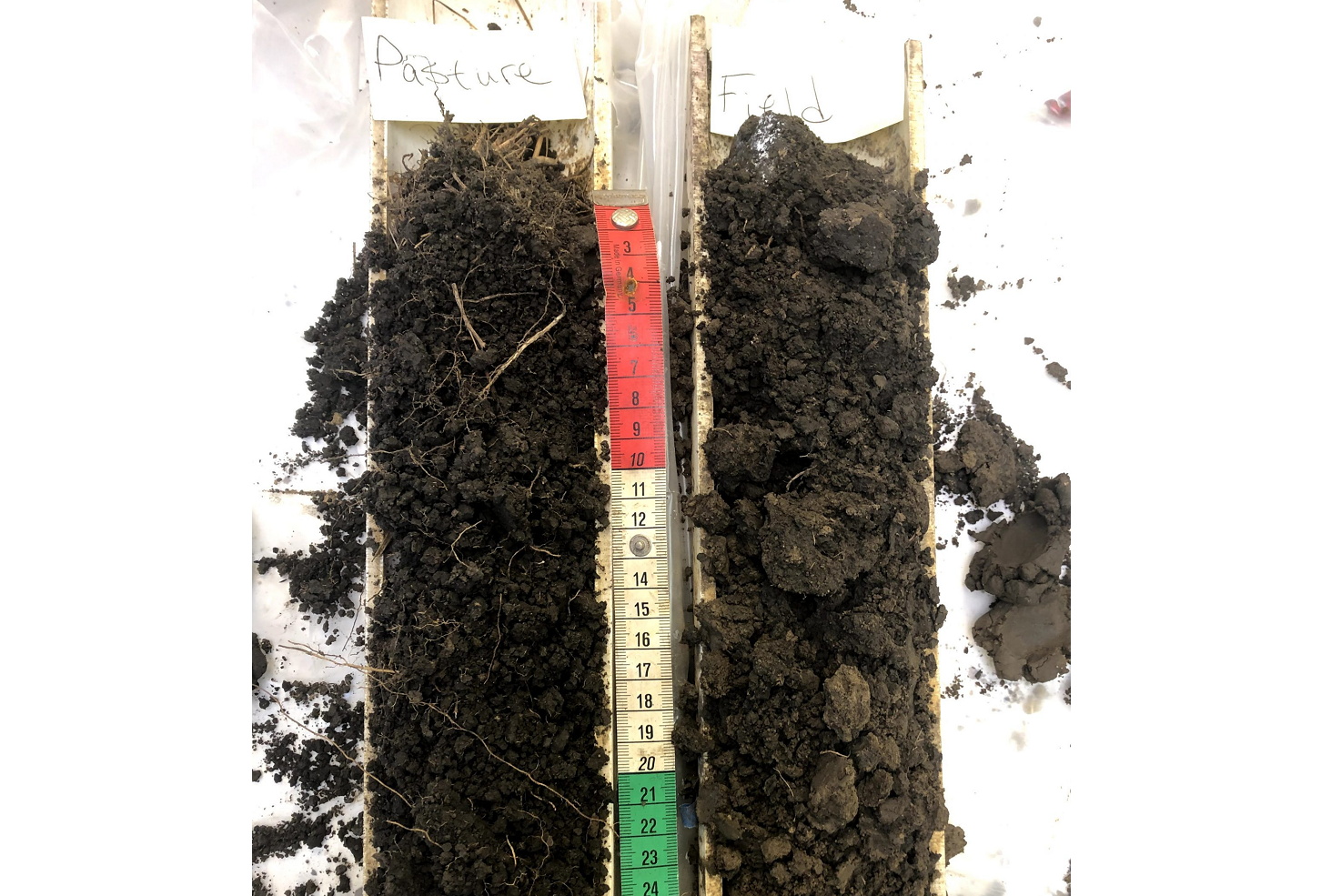
Prismatic
These have longer natural breaks vertically in the soil rather than horizontally. As was the case with this large prism in the photo, they are generally found in B horizons. Water and roots in this soil will likely move preferentially through the breaks between these units.
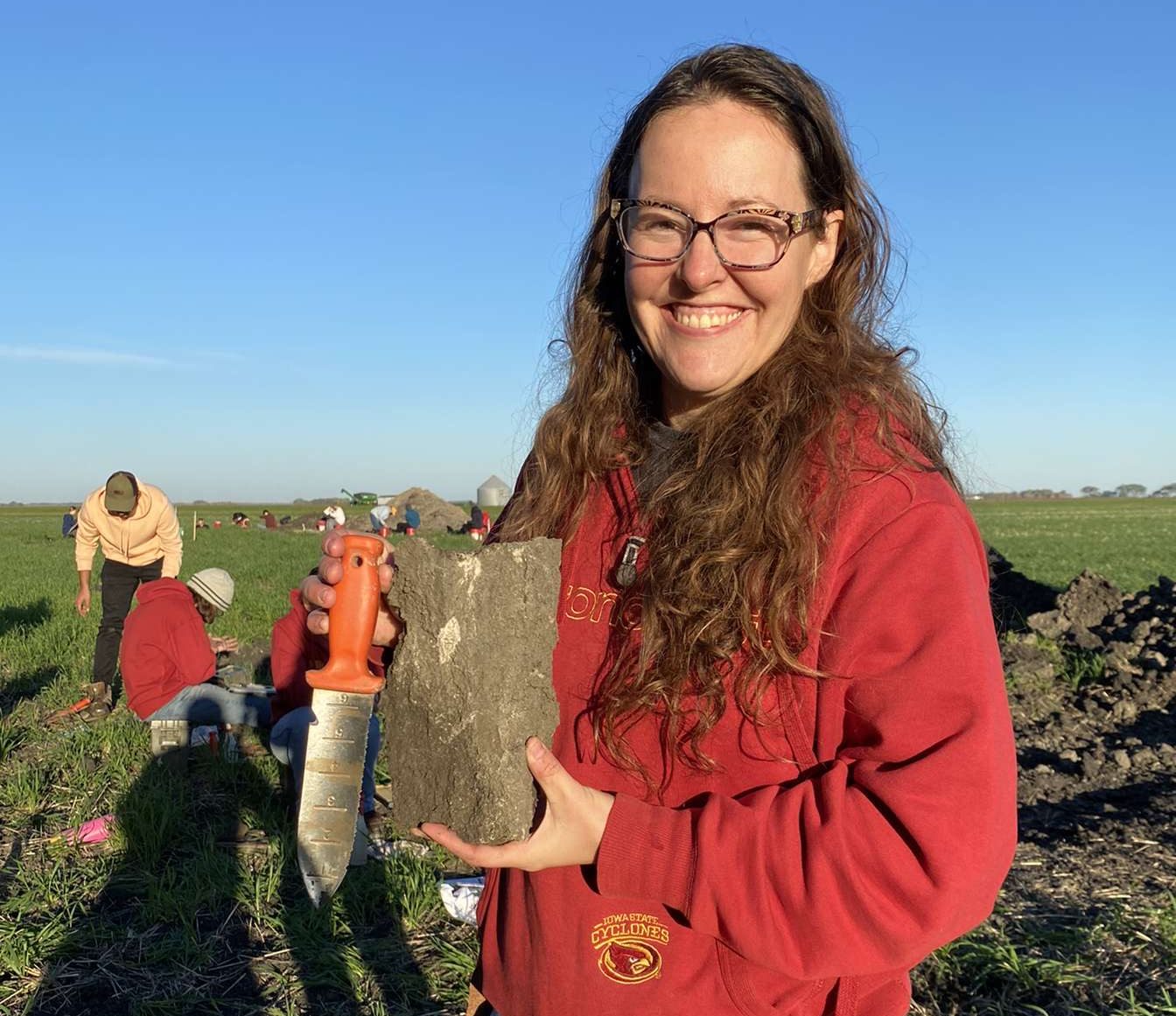
Columnar
Columnar are a special type of structure created when sodium impacts a prismatic structure. A ‘muffin top’ or ‘popcorn’ looking appearance on the top of a prism develops from sodium dispersing particles. These are agronomically challenging soils to manage. Both water and roots will likely have problems moving through this soil easily.
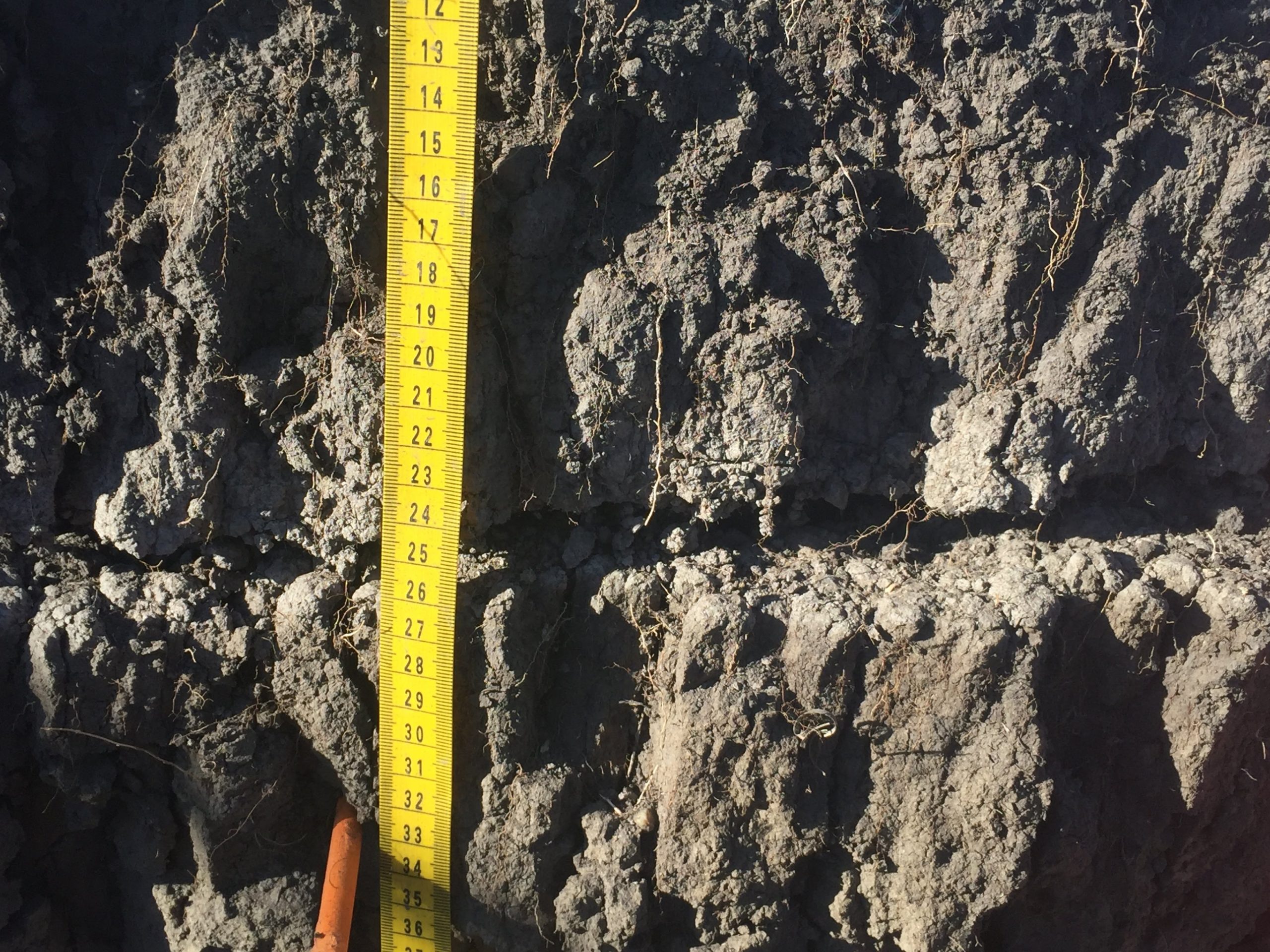
Massive or Single grained

These units of ‘non structure’ indicates there has been limited changes to this soil since deposition. In glacial till materials, a large piece will likely break between the points of pressure applied, rather than falling apart on pre-determined lines. A midwestern soil at perhaps five feet of depth may not have developed structure because this takes something acting on it. Roots, freeze-thaw, wetting-drying and other factors are less active here, slowing down changes.
For single-grained soils, a lack of fine particles or organic matter means that there are not significant forces to hold sand grains together. This is an effect you may have seen in a sandbox or beach, as a small disturbance will cause the sand to fall apart to individual grains.
Management Impacts
Since plant growth tends to increase soil structure, more plant growth tends to lead to a better structure. In prairie ecosystems, a strong granular structure is expected.
Tillage can have negative impacts on soil structure, particularly when done in poor (generally too wet) conditions. Consider the building construction of the earlier example in this discussion. When being built from that pile of building materials, a wall is removed or damaged, so this must be rebuilt first, slowing down progress.
- Structure is important as it indicates the arrangement of soil particles
- Soil structure can change over time due to changing conditions or disturbance
- A variety of shapes exist, these tell you where water and roots are likely to move along those natural breaks
- Management has an impact on soil structure

